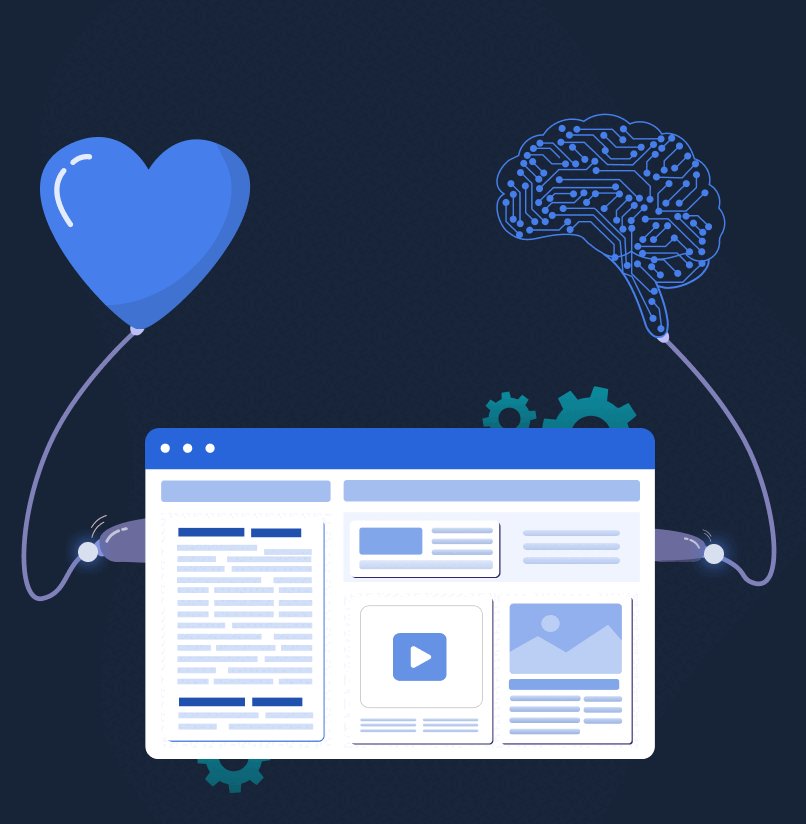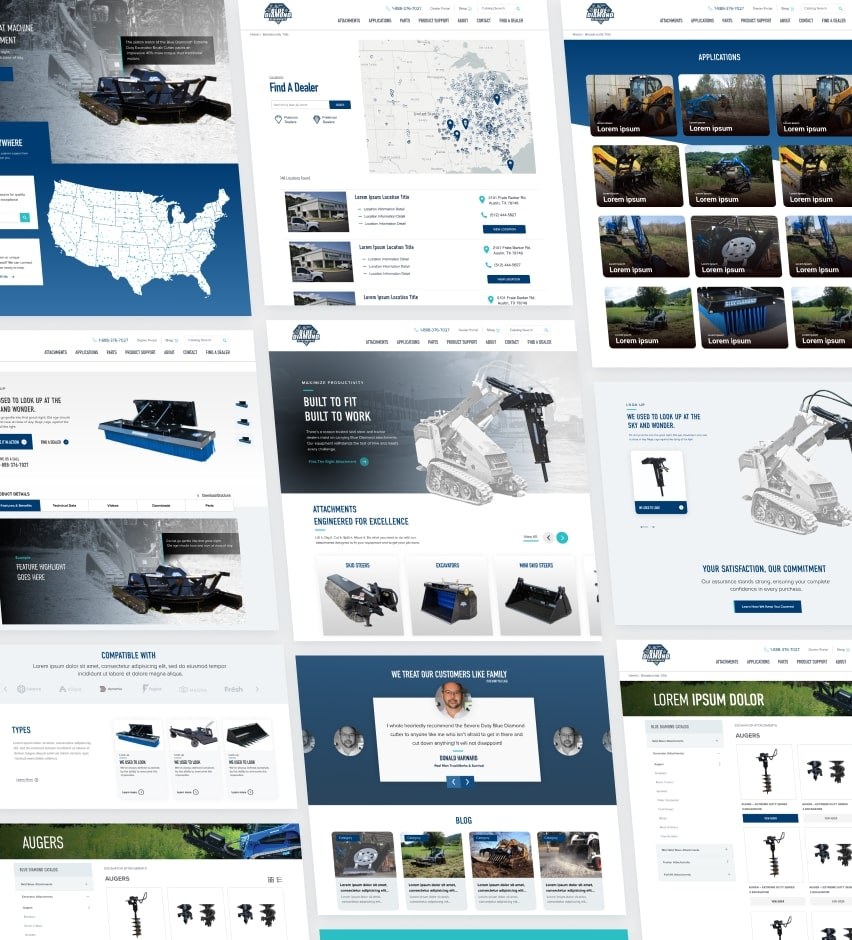

10 Steps to Enhance Your B2B Website Experience
A B2B website delivers more lasting value and ongoing loyalty when it offers the best possible user experience (UX).
Whether online or in real life, customers are willing to pay for exceptional experiences. Companies that don’t meet expectations or lack luster among their competitors will lose revenue and risk tarnishing their brand reputations.
How good is a B2B website's UX? That can be evaluated using engagement metrics like conversions (e.g. contact form submissions), time on site, bounce rates, scroll depth, and pages viewed per session.
The best B2B websites start with a solid design foundation, then perform continuous iteration and refinement through A/B testing campaigns and traffic data analysis, ensuring every page and interaction delights and satisfies visitors.
10 Tips to Enhance B2B Website Experiences
While most of these recommendations are quite simple concepts, they do require thoughtful execution and research. We suggest tailoring each of these tactics to fit your resources and workflows, based on your key needs and goals for the website.
Design page layouts based on the prioritized goals of visitors.
Discerning customer needs is crucial for tailoring the user experience to drive sales of B2B products and services. Conduct surveys of your customers, distributors, and/or partners, then analyze their feedback to gain more insights into their preferences, pain points, and expectations.
Use your findings as reference points to evaluate the effectiveness of your key landing pages. Are designs, calls-to-action, images, and headlines doing everything they can to address those needs and lift conversion rates? If not, then tailor messaging, the user experience, and the user interface to meet and exceed their expectations.
Make it easy to contact your business.
Simplify the process for users to reach out and connect with your business. Here are some tips:
- Provide easily accessible links to the contact form throughout the site, including in the main navigation menu, the footer, and in on-page menus or calls-to-action (CTAs).
- Include visible contact information, such as phone numbers and email addresses.
- Design contact forms to capture only the minimum information necessary.
- Customize forms for different areas and functions of the site, e.g. forms for requesting product documentation vs. customer service contact forms.
Optimize the site for mobile devices.
While it's true that B2B website traffic tends to skew towards desktop, there's no denying the dominance of mobile when it comes to internet traffic – in fact, mobile traffic overtook desktop traffic several years ago.
With that in mind, you shouldn't ignore the needs of your mobile audiences. So make your UX seamless across devices by optimizing your website for mobile devices.
Use responsive design and mobile-friendly layouts to adapt your website's content and functionality for screens that may vary in size and dimensions. A Progressive Web App is considered a development best practice that supports this goal because it is responsive and fast on any device with a browser, whether desktop or mobile.
Personalize content wherever possible.
Personalization makes users feel valued, and a personalized approach in B2B also gives prospects more confidence that you understand their business and relate to their challenges. Accordingly, you should tailor the website's UX based on the individual preferences, behaviors, and demographics of your targeted marketing personas.
Throughout the website, identify where you can feature personalized recommendations, content, and messaging that resonates with the specific personas who are most likely to navigate to those pages.
Will engineers be viewing products? Make it easy for them to access technical data and specifications from product pages. Will procurement managers need to download industry certifications or other business info? Then make sure the relevant landing pages include prominent links and CTAs guiding them to those resources.
Completing this exercise will enhance your website's overall visitor engagement, satisfaction, and conversion rates for each page.
Make sure designs and messaging are consistent.
Consistency fosters trust and familiarity, which is especially important in B2B marketing where prospects are visiting websites to evaluate potential partners and vendors based on how they minimize risks and maximize benefits and value for their business.
Accordingly, make sure your website maintains uniformity in aesthetics, page designs, navigation, messaging, voice and tone, and features across all pages and sections of the site. This will build more trust, reinforce corporate branding, and provide a more cohesive brand experience for visitors.
Demonstrate empathy and empower your users.
Customers want to feel heard and supported. Empathy involves listening and understanding their emotions. Empowerment means offering solutions and options, exceeding expectations to address their needs, and fostering strong relationships.
Produce diverse, high-quality content.
Deliver valuable, relevant content that meets users’ needs and interests. Create informative articles, guides, and multimedia resources to educate and engage your audience.
Support troubleshooting and problem resolution.
Prioritize swift and effective problem resolution for users. Implement clear communication channels, proactive support measures, and efficient troubleshooting processes to address issues promptly and ensure customer satisfaction.
Gather feedback for continuous validation and improvement.
Collect feedback regularly from users to identify areas for enhancement. Analyze insights meticulously, prioritize improvements, and implement iterative changes.
Be transparent and trust your users.
In B2B especially, it's important to clearly communicate your intentions, policies, and processes to visitors. You can also provide insights into your organization’s offerings and operations to help visitors familiarize themselves with your company's value propositions and differentiators.
Upholding transparency through the website cultivates your brand's credibility and reliability, strengthening relationships with visiting prospects and returning customers who value authenticity and integrity in their interactions and their business partners.
Boost Engagement and Loyalty with Compelling UX
Enhancing a B2B website’s user experience involves a delicate balance of art and science.
Design and development based on best practices are crucial in crafting user-friendly interfaces that resonate with the target audience. Using personas, user journeys, and user stories adds depth and clarity to understanding customer needs and behaviors.
By combining creative design elements with data-driven insights, businesses can create compelling user experiences that drive engagement and loyalty.
It’s not just about aesthetics. It’s about functionality, intuitiveness, and meeting users’ expectations at every touchpoint.
Our team of developers, designers, and digital marketers at DBS Interactive apply best practices with a thorough understanding of your business to create optimum user experiences that achieve business goals.
Don't just take our word for it – see the results for yourself.
FAQs
When users feel valued and can easily find what they need, they are more likely to return and even recommend your site. A well-designed B2B website builds trust and creates loyal customers. Businesses can differentiate themselves, retain customers, and avoid costs associated with lost revenue or reputation damage.
With so many people browsing websites on their smartphones, mobile-friendly design is imperative. Optimizing for mobile ensures a seamless experience. Using responsive layouts and Progressive Web Apps (PWAs) can make the website faster and more user-friendly.
Consistency creates a familiar and trustworthy experience for users. When messaging and interactions stay uniform across all touchpoints, it helps users feel confident using the website.
High-quality content is the foundation of exceptional user experiences. Blog posts, guides, and videos are examples of content that engages, educates, and informs users. By offering relevant resources, you position your website as a go-to source.
Regularly collect and analyze user feedback, perform A/B testing, and refine your site using data-driven insights. The Google Lighthouse testing tool offers a quick analysis and actionable insights of your website.




